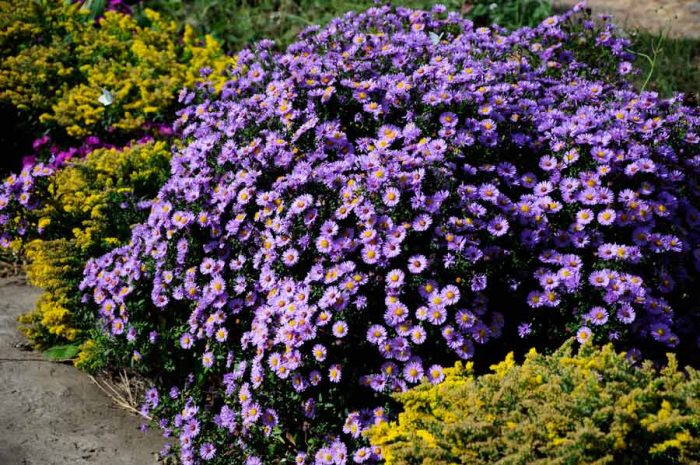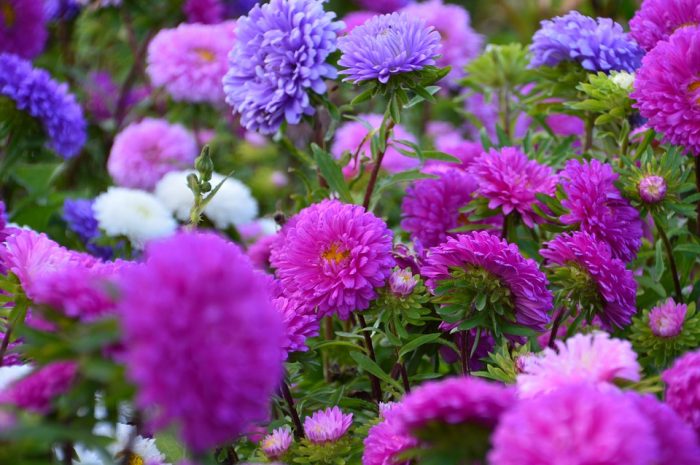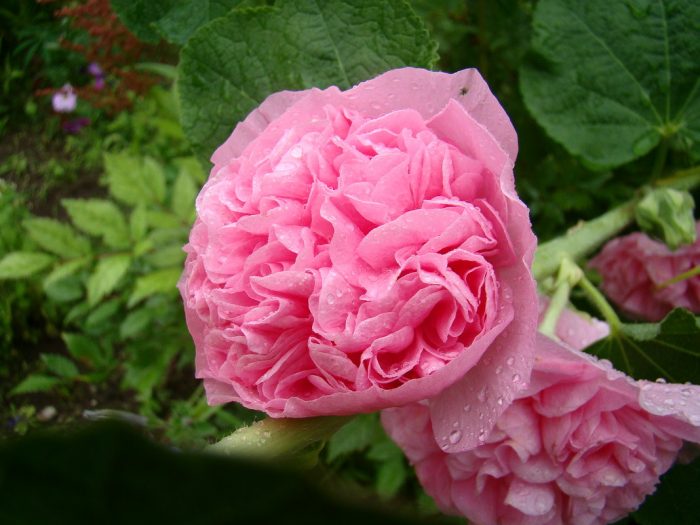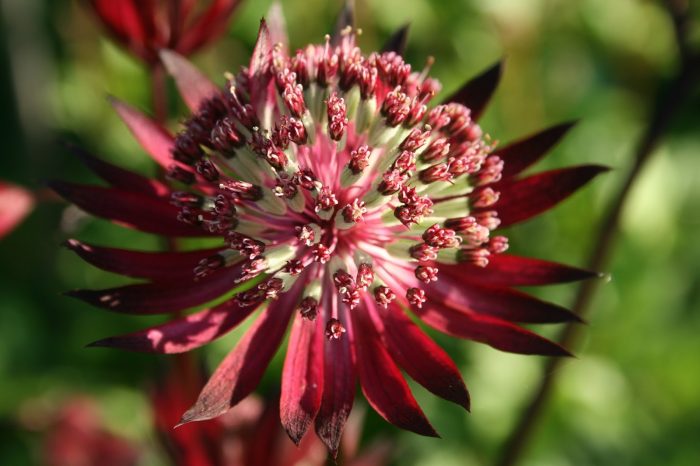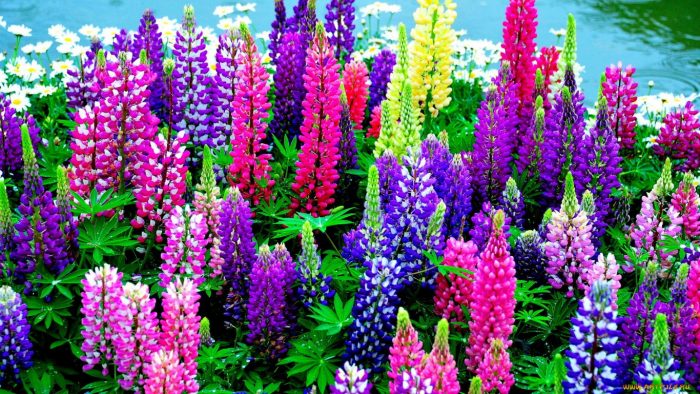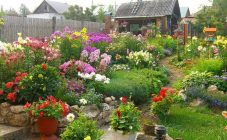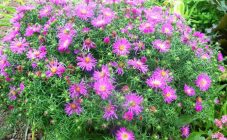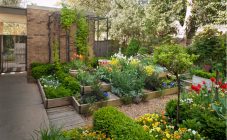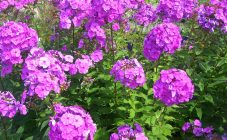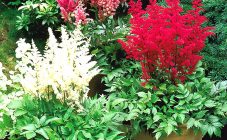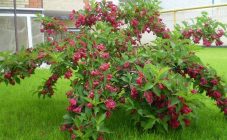Content:
Herbaceous flowers, perennials and shrubs can decorate not only a small flower garden, but also public recreation areas. Tall or short, with a bright aroma and odorless, with a pronounced interesting color of buds and deciduous parts - all these are decorative perennial flowers. Today it is impossible to count how many species of such plants exist. One thing is known - all of them will adequately decorate not only home plots, but also parks. Further, about perennial flowers from a to z.
Plants are considered perennial, life and development of which lasts more than two years. Most often, the concepts of perennials are assigned to herbaceous flowers, that is, to those plants whose aerial part never becomes lush. Depending on how and when flowering occurs, plants can be:
- Monocarpics - release flowers and bear fruit only once, in the last year of life;
- Polycarpic - capable of blooming and bearing fruit several times throughout the entire period of life. Most of all herbaceous perennials belong to this variety.
Perennials flowers for open ground
A long-flowering, beautiful front garden depends on the right crops. Unpretentious perennial flowers are valued for their ease of maintenance. In addition, such a plant does not need to be transplanted for the winter in order to protect it from frost. Such an early flower will adorn the site until late autumn, if it is properly cared for. For such plantings, spring is the period when the aboveground part of the perennial grows back, provided that with the arrival of winter, the branches completely die off. All flowers are different, but they will be united by a short list of the most popular perennials:
- Aster is a variety that grows in almost all potting mixes. A garden dweller who is not only unpretentious in content, but also grows rapidly. Easily tolerates severe frosts in open areas, multiplies quickly.
- Astrantia is a flower variety, the color of the buds of which can be white, pink, blue, etc. colors. Loves shady places.
- Astilba - refers to unpretentious varieties. It begins to bloom when summer comes and continues until the fall season begins. Thanks to these flowers, the flower bed pleases with interesting colors throughout July and August.
- The catchment - spring flowers of medium height, delight with bright buds from May to June. The root system with a good protective layer of the earth easily overwinters in the open field. In this case, the first shoots begin to appear from under the falling snow, like snowdrops.
- Daylily is not a moisture-loving species, it prefers to grow in shady parts of the site. Most often, it is used to decorate a summer cottage or a park area along the avenues. Needs periodic liquid feeding.
- Daylily Golden ball is a tall perennial growing up to two meters in height. This is the variety that is preferably used to create hedges and to hide transparent fences.
- Lupine - Can be grown outdoors and near barren land. Moreover, it is well preserved in winter.
- Liatris is a perennial flower that has white or purple blooms that resemble tassels. A distant visitor in natural conditions grows only in North America. The quality of the herb depends on how well the corms overwinter. In society, it may be called a flaming star.
- Iris is a perennial flower with herbaceous branches and the same root system. They delight not only with bright buds, but also with a delicate, sweet smell. The flowering period usually lasts from May to mid-July.
Flowering time of perennial flowers
In order for perennial street flowers to decorate the backyard area constantly, several varieties should be planted, which will replace each other from month to month. To do this, it will not be superfluous to draw up a flowering calendar by months, which will include a description of individual interesting plants.
Perennial flowering calendar
| Perennial flowers | Flowering period | ||
|---|---|---|---|
| April May | June July | Aug. Sept | |
| Lilies | - | - | |
| Aquilegia | - | ||
| Anemones | - | ||
| Astilba | - | ||
| Asters | - | ||
| Colchicum | - | ||
| Fighter | - | ||
| Cornflowers | - | ||
| Veronica | - | ||
| Gelenium | - | ||
| Heliopsis | - | ||
| Geranium | - | ||
| Hyacinths | - | ||
| Gladioli | - | ||
| Elecampane | - | ||
| Loosestrife | - | ||
| Loosestrife | - | ||
| Goldenrod | - | ||
| Irises | - | ||
| Bells | - | ||
| Crocuses | - | ||
| Liatris | - | ||
| Day-lily | - | - | |
| Spurge | - | ||
| Daffodils | - | - | |
| Forget-me-nots | - | - | |
| Peonies | - | ||
| Roses | - | - | |
| Cyanosis | - | ||
| Yarrow | - | ||
| Tulips | - | - | |
| Phlox | - | - | |
| Corydalis | - | - | |
| Chrysanthemums | - | ||
| Sage | - | ||
Perennial varieties
It is customary to classify perennial flowers according to various criteria, but it is most popular to divide plants by height. Given such features, the following groups are distinguished:
- Perennial low-growing flowers - their height is usually no more than 30 cm. For the most part, such plants are used to decorate gardens, borders and other low compositions;
- Medium-sized plants - can reach a height of 30 to 80 cm. They are considered multifunctional, can be in a composition or grow separately in flower beds;
- Tall flowers - can reach almost two meters in height. They are planted as separate objects to decorate parks and open areas. These include perennial daisy flowers, stock-roses, tricyrtis, sunflower;
- Curly flowers - have the longest stem and small buds. The description of the plant itself suggests that they are used to decorate gazebos and fences.
Also, flowers are divided into varieties, based on the timing of flowering:
- Very early - the flowering period begins in late spring and lasts until June 10. Snowdrops are considered representatives;
- Early plants - bloom at 10 June and finish in the middle of the month. Varieties - crocus, mouse hyacinth, iris, aster, tree forest and peony;
- Medium flowers - bloom from mid June and continue until the end of the month. These include flowers liatris perennial, daylily, varieties of radiola;
- Late flowers - the beginning of the emergence of buds falls in late June - early July
TOP popular perennial plants
Quite often, gardeners cannot choose what is best to plant in their own garden. The list includes unpretentious and frost-resistant varieties that can be planted in home areas:
- Astilba is a herbaceous flower, the height of which can vary from 15 to 100 cm in different varieties. The shoots are distinguished by shiny openwork foliage, the color of which can be bright green or green with a red overflow. Blossoms are small, form a lush inflorescence, which can have a variety of colors. Plant varieties go well with others or are planted as a separate composition;
- Lily is a bulbous plant. Gardeners use mostly hybrid varieties. Used for different types of flower growers. They are planted in small bushes and in combination with other plants;
- Iris has recently become more and more popular in gardening. This is due to the fact that the plant continues to perform a decorative function, even after the buds have faded. In addition, the flower is not capable of requiring special care and conditions for maintenance. Differs in frost resistance and pleases with various colors of buds;
- Clematis is a perennial vine with a woody or herbaceous stem. The height of such a plant can reach 10 meters. Most often, hybrids are used in home cultivation.Lush flower buds are considered a distinctive feature, although most gardeners prefer small-flowered plants;
- The red plant is a rose. There are many types of decorative hybrid varieties. They vary in size of buds, shades and sizes of bushes. They go well with various flowers planted at their summer cottage.
Agricultural technology for growing perennials
When growing perennial flowers in fertile soil, the necessary measures for their care are:
- Loosening the soil;
- Cleaning the site from weeds;
- Top dressing.
Perennials are planted through sowing seeds or by vegetative propagation, some of them can multiply by self-seeding. The most popular methods of vegetative reproduction are:
- Division of bushes;
- Tuber division;
- Cuttings;
- Bulb planting;
- Planting children;
- Planting corms.
Like any ornamental plants, perennials are prized for their beautiful, lush color. At the same time, they begin to perform the main decorative function only 2, 3 years after disembarkation. Development continues for 4-5 years. Certain varieties of perennial plants can maintain their decorative effect for 10 years.
